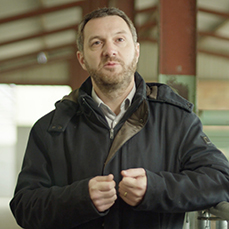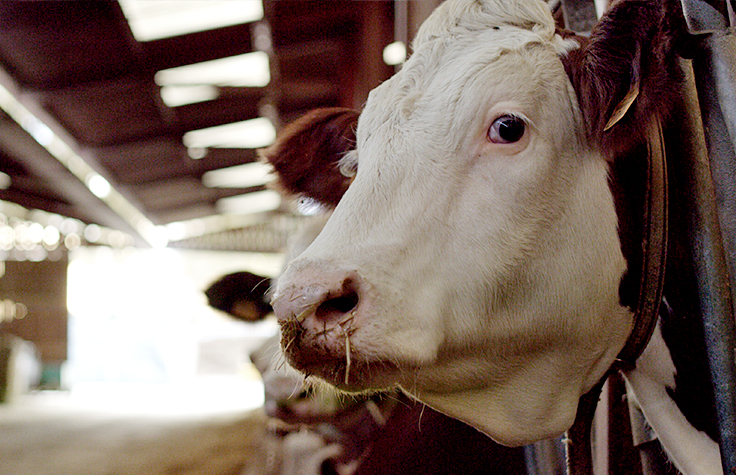Facing the Future: How Genetics Will Continue to Transform the Agriculture Industry
Introduction
UMOTEST, an agriculture cooperative focused on the healthy production of the Montbéliarde cattle breed, has been leading the way in using genetics and genomics in animal husbandry. This innovative collective is working with more than 3000 partner breeders to use genotyping and other techniques to produce and disseminate sexed semen to enhance hardiness, milk production, and longevity in these animals. Mickaël Brochard, Head of Research and Development Initiatives for UMOTEST, said that the group has helped to revolutionize the way farmers are working with the Montbéliard breed. However, his main mission is to plan for the future by promoting technologies that can benefit the farming, breeding, and food processing industries through improved efficiencies that result in better consumer products.
“My job is to look ahead and see what will be asked by farmers and society, in terms of technology, and within the context of global changes and environmental concerns,” he explained. “It involves building the projects that will enable farming to adapt and thrive amidst all these changing conditions.”
iCommunity spoke with Brochard about the value of genotyping and selective breeding, and why he sees a future where all animals will be genotyped.

Mickaël Brochard is Head of Research and Development Initiatives at UMOTEST.
Q: What changes need to occur in agriculture for it to remain successful?
Mickaël Brochard (MB): We are focused on finding solutions to improve farming efficiency. We would like to reduce farm input needs while improving the health and well being of the animals, economic efficiency (output over input), and environmental footprint (lower resource consumption, less pollution) of farming. This trend includes focusing input needs on local resources.
We are also working on improving these farms so that the products they deliver to consumers are as healthy as possible and the most suited to consumers' requirements and lifestyle. We want to move towards agroecological farming.
UMOTEST projects are also focused on improving the end product, milk, in a natural way to reduce artificial processes.
Q: What can genetics offer the food processing industry?
MB: Milk is a product that is very rich and diverse, with fatty acids, proteins, and minerals. Genomics will help us understand this diversity so that we can produce better cheese and other dairy products.
Even as we talk about working for the industry, we are ultimately working to meet the needs of the consumer. We are studying milk so that we can define the best animal and conditions to produce the highest-quality milk possible directly from the farm. We are trying to limit the food processing aspects of the process. When you make cheese, you will always need to transform milk into cheese. However, if the milk is more suitable for that transformation, we will provide a higher-quality product for the consumer. The challenge is to work on the potential of the animals and their intrinsic ability to produce a product of the highest quality.
"With genotyping, we can directly link a component, a quality, or a variant with the exact genome of the animal. That is extremely useful in terms of our capacity to predict and anticipate things about an animal and its products."
Q: Have genomics made a difference in developing these characteristics?
MB: Genomics has brought about a huge change in our ability to understand the functioning of the animal and its capacity to produce milk with specific qualities. We had a general understanding of trait genetics based on the parents of a certain cow and the probability that certain traits were passed down. With genotyping, we can directly link a component, a quality, or a variant with the exact genome of the animal. That is extremely useful in terms of our capacity to predict and anticipate things about an animal and its products. Genotyping has revolutionized our ability to work on different characteristics in the animals.
Q: Have farmers been unwilling to work with these new techniques?
MB: I work with breeders and my priorities and direction come straight from their requests. That said, they are a part of society and they are themselves consumers. Their needs are quite close to the expectations of society in general. Genomics initially frightens some breeders. However, when we explain what the technology is and what it can do, and that we are not transforming living things or genomes, it’s no longer a problem. Laying the groundwork, and explaining these things, can take time. But it is worthwhile because it brings so much to farming.
Q: What is the value of genotyping for breeders?
MB: Breeders have accepted this technology because they can see the advantage of understanding their animals right away. That is decisive. With genotyping, they know their females better. They were previously working blind, trying to figure out characteristics through the parents, their performance, and their way of being. They understand that the demands on farming to produce high-quality, natural products are increasing and they see how genotyping can provide solutions.
When farmers are speaking to our head of R&D, they are looking at the long term. It is up to us to try to catch up with their expectations so that we can be as effective as possible and reply to their requests as best as we can. They are amazed each time we explain to them what we can do and what we understand now. We are always received extremely well. They realize genotyping is a tool that is more powerful and more accurate than what we had before, enabling us to work on the intrinsic qualities of the animal and getting closer to nature to give us the things we need.
"When they get that tag, I think it will be routine to genotype the calf so that we have the information to make adjustments, either by adapting their feed or adapting how we use and breed each calf."
Q: Can you describe the progress UMOTEST has made in preventing disease in the Montbéliard cattle breed?
MB: Our members are very interested in anything having to do with the animals’ well-being and health. That is very important to them. They are with these animals every day and they can’t bear to watch them suffer. We are working upstream to improve the ability of animals to resist disease. For example, we have been working on a project for a few years on hoof health. Some animals are susceptible to diseases that affect their hooves, which can be quite painful. If we can provide farmers with solutions to prevent these diseases, they are very keen on that.
Q: What other kinds of projects will UMOTEST be working on in the future?
MB: In the future, society will require animals to be raised with the least impact on the environment as possible. That means grazing instead of bringing them feed. The ability to raise an animal to get as much value out of grass, which grows naturally, is really important. A significant amount of processing is needed in producing animal feed.
I expect we’ll be focused on animal health as well. We need animals to be sturdy, to get along by themselves, and require the veterinarian as little as possible.
We are also working on improving the match between the genome and farming conditions. In France, we have highly diverse farming systems. On a global scale, that is even more true. The diversity of farming and climate conditions affects the food processing industry. We need this diversity and it is up to us to adapt to it. With genetics, we can advise our members about which genetic profiles would be best for certain conditions. We have never been able to do that before except for very general breed or animal characteristics. Within 5–6 years, we will be able to adapt to this diversity through breeding to find the best solution for certain farming conditions by taking into account genome and environment interactions.
Q: Do you see a future where all animals are genotyped?
MB: In the future, I see all animals being genotyped or possibly sequenced systematically at birth. A few hours or days after birth, each calf receives an identification tag. When they get that tag, I think it will be routine to genotype the calf so that we have the information to make adjustments, either by adapting their feed or adapting how we use and breed each calf. I believe that one day this will become the standard, first for management and thereafter for genetic purposes. That will be an essential part of precision farming.
Watch how the UMOTEST breeding program is producing gains for dairy cattle herds:
www.illumina.com/company/video-hub/deQZ4kNnTU0.html
Read how genetic selection enables a Montbéliard farmer to improve his herd:
GAEC des Culards iCommunity article
